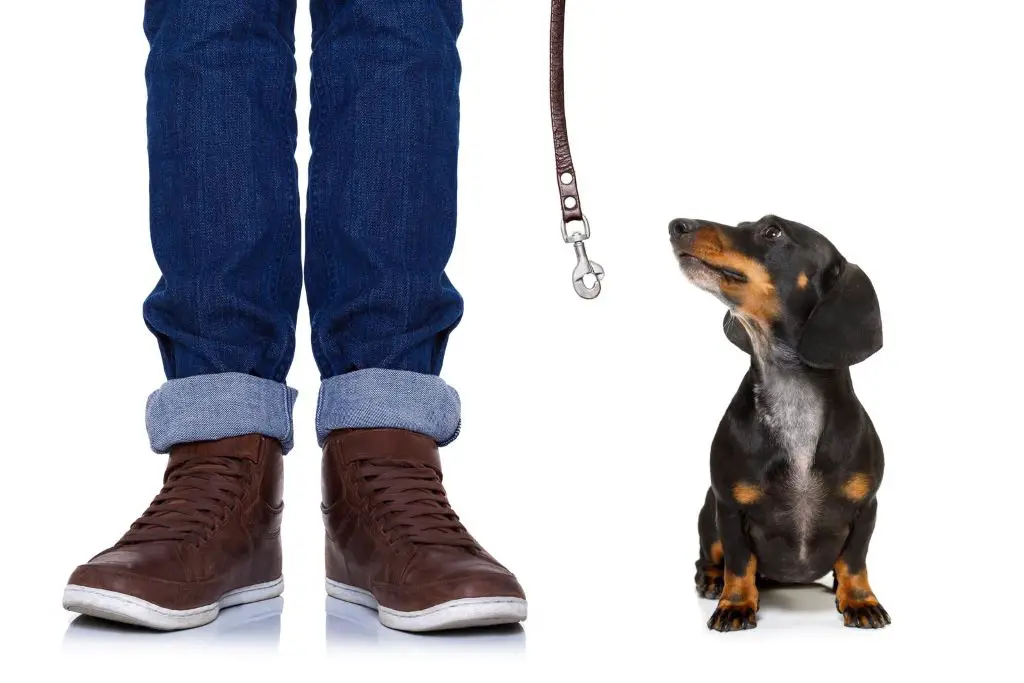Harnesses have been a popular choice for dog owners who want to walk their pup without having them wear something around the neck, or just prefer it. Harness users say that dogs don’t get as tired from walking with this type of leash because there’s no weight pulling on them, so they can run ahead more easily than if you were holding onto a collar tightly all day long!
A lot of people also feel less worried about losing control over an excitable hound when using one since these types of anecdotal reports suggest harnesses allow greater freedom during movement, which may be necessary for certain circumstances – such as trying desperately not to let loose while running across busy streets
Can a dog wear a harness in a crate?
A harness makes it easier to move your dog, especially if you’re taking them on walks or to areas where they’ll need to be secured. If you have a dog that’s not used to being harnessed, it may take them some time to get used to the sensation, and they might need training. You should start with short periods of time in the crate with occasional treats and slowly work your way up.
It is also interesting to know that some people like using harnesses for dogs instead of regular collars because the harness doesn’t choke your dog as a collar does. If your dog is an escape artist (like mine), you might be particularly interested in this benefit.
Is it safe to leave a harness on a dog in a crate?
Harnesses are designed to distribute pulling pressure across a greater part of the dog’s body, making it safer for them when they’re being walked. The strap lies between their legs and around their ribcage, whereas a collar tends to be pulled directly on top of where the neck meets the shoulders, so over time, this can cause pain and discomfort.
Unfortunately, it’s not safe to leave a harness on your dog when they’re in their crate. A crate is primarily used for training because dogs are instinctively denning animals who want to have a quiet place where they can go to get away from the chaos, much like how we may retreat to our bedrooms after a long day at work!
Since a harness prevents your dog from being able to feel like they’re in that quiet and more protected area of their home, it doesn’t help with the training aspect of using a crate.
There’s also the concern that dogs can get caught up in their harnesses while playing around if you do allow them to wear one when in their crate. This can be really dangerous and painful for your dog as you can imagine.
Should I use the harness for walking?

If you prefer to use a harness when taking your dog out for walks, there are some things to keep in mind. Firstly, if your dog is wearing a harness, they shouldn’t be left on when you’re not around to monitor their behavior.
Many dogs get caught up in their harnesses by getting too involved with playing games, and it can turn into a serious choking hazard if your pup is left unattended. If your dog is already uncomfortable with wearing a harness, you can try conditioning them by leaving it on for short periods of time and giving them treats as they cope well, so gradually build up the length of time until they’re comfortable with it.
Is my dog okay if their harness is too tight?
A harness should never be left on your dog if there are any signs of sores or discomfort on their skin, no matter how slight. It’s important to get your pup used to the sensation of wearing a harness by starting off with short periods of time and gradually increasing that before you ever leave them unattended in one.
If your harness doesn’t seem like it fits correctly, it’s best to take your dog to a professional groomer or pet supply shop to get it adjusted for you. There could be something pinching them in an inappropriate way which will only cause more problems the longer they continue wearing it!
Pros and Cons of Using A harness on a dog in a crate
Here are the pros and cons of using a harness on a dog in a crate:
Pros
Harnesses distribute pulling pressure across a greater part of your dog’s body which is safer for them when walking. Some dogs find harnesses more comfortable than collars, and it doesn’t choke them as easily. Not having to wear a collar means that your dog can’t slip out of their collar, which could get stuck around their neck if they escape.
Cons
A harness prevents your dog from being able to feel like they’re in that quiet and more protected area of their home while inside a crate, so it doesn’t help with the training aspect. There’s also the concern that dogs can get caught up in their harnesses while playing around if you do leave them wearing one inside the crate.
Conclusion
In the end, every dog is an individual, and it’s important that you figure out what works best for your pup. In some cases, a harness may be beneficial to help keep them safe while being walked, but in others, it just doesn’t work at all, and they’ll continue to try and wriggle free of it when left unattended. One of the most important things you can do for your dog is learn to read their body language and understand what they’re communicating to you. This will help you determine if a harness works best for them or whether it may be more beneficial to switch back to using a collar just until they get used to wearing one on their walks!
If you’re not sure if your dog would be more comfortable wearing a harness or collar, consider switching between the two for short periods to see how they deal with either option before making that decision. You can then slowly switch them over to just using a harness, and after some time, you’ll be able to tell whether it’s what works best for the long-term. Not sure if your dog would be more comfortable wearing a harness or collar, consider switching between the two for short periods to see how they deal with either option before making that decision. You can then slowly switch them over to just using a harness, and after some time, you’ll be able to tell whether it’s what works best for the long-term.








